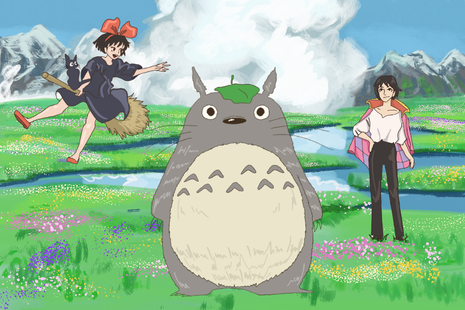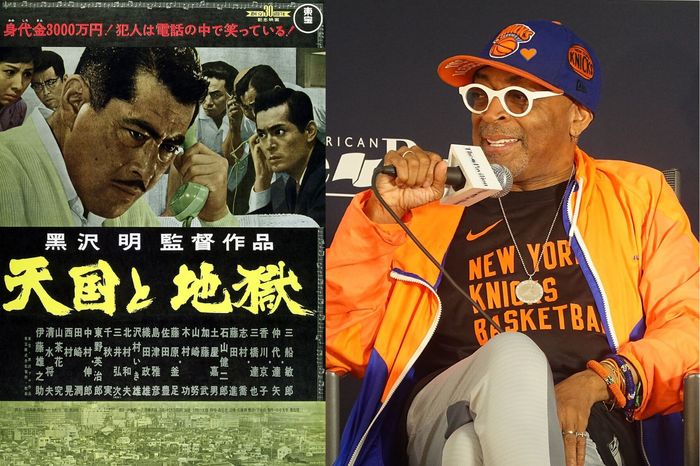What the West can learn from Studio Ghibli
Hilary Lau unpacks the character and plot elements that characterise Studio Ghibli films

Growing up in Hong Kong, I was privileged enough to be exposed to movies from both the East and the West. Amont the plethora of films from Disney, Pixar and Dreamworks, Studio Ghibli stood out to me as a top-grossing Japanese animation company.
Studio Ghibli productions share many traits with Western cartoons: engaging voice-acting, memorable soundtracks, loveable characters (that were made into plushies for me to purchase). Yet I find a je ne sais quoi in Studio Ghibli movies that trademarks their style, a glow that embellishes their characters and separates them from the Western form of storytelling. It is this magical quality that leads me to revisit childhood favourites time and time again, and what I argue might sometimes give it an edge over Western animation.
“Studio Ghibli is unique in its prioritisation of characters’ journeys”
Firstly, Western cartoons are often focused on outcomes, with characters being given a quest and setting out to fulfil it. Contrarily, Studio Ghibli is unique in its prioritisation of characters’ journeys. Young protagonists rarely start with an explicit goal in mind; they build towards one as the film goes on, learning how to make friends and take care of themselves along the way, gradually shaping their emotional maturity. This gives Ghibli films a tranquil, slice-of-life feeling – it is through this meandering pace that characters get a chance to know themselves better and grow as people. Studio Ghibli movies understand that change is rarely exponential, expertly weaving instances of character growth into the seeming monotony of daily life, resonating with the individual and making even the most humble milestone feel commendable.
The way Studio Ghibli organises plot is intrinsically tied to the Japanese norm for independence. Children are rarely coddled, instead taught from kindergarten to clean up after themselves, do their chores, and walk to school on their own. They gradually develop a sense of resilience, thinking for themselves before seeking help from others. Every movie features a self-directed learning curve; Kiki’s Delivery Service is about a young witch who moves to a big city and starts her own (you guessed it!) delivery service to earn a living. In Ponyo, the namesake protagonist finds a goldfish that escapes from the ocean to experience life above water. In Spirited Away, a young girl must find a way to save her parents, who have been transformed into helpless pigs. None of these children are given concrete guidelines, instead left to cope with failures and rejoice in their hard-earned successes. Their ability to map out a path for themselves provides the audience with a greater sense of satisfaction and catharsis that is unparalleled by Western animations.
“Studio Ghibli never treats its audience like children”
More fascinating still is the way Studio Ghibli never treats its audience like children, structuring its worldview to reflect the real world. In Western animations, there often exists a nefarious antagonist that the pure of heart must defeat; these conflicts lack nuance, driving the stereotype that cartoons are a child’s happy-go-lucky perception of the complexities of real life. Studio Ghibli subverts this generalisation by presenting the world unflinchingly, full of people who clash because of different ideals and means of achieving their respective goals, people who are sometimes morally questionable but never a force of unadulterated evil.
For instance, Princess Mononoke (1997) tells the story of Prince Ashitaka, who, cursed by a resentful boar god, decides to seek a cure and uncover the reason behind such hatred. He is caught in the middle of a conflict between the leader of Irontown, Lady Eboshi, who is the source of the boar’s curse, and the wolf princess San. Eboshi is initially portrayed as the perfect selfish antagonist, destroying the forest and purging its inhabitants for resources. Yet this impression is quickly subverted with a glimpse into Irontown, showing viewers that these measures are necessary for her to sustain the people she protects, a community of exiled lepers and prostitutes. The focus of the movie is not to force viewers to choose sides, but to empathise with all characters and seek solutions toward peaceful coexistence.
What I’m describing might sound pessimistic to some – to imagine a world where evil can never be fully eradicated and difficulties persist is admittedly a terrifying prospect. But that’s precisely what’s fascinating about Studio Ghibli animations, because they never lose sight of their overarching messages of hope. The protagonists of Ghibli films are subjected to difficult life lessons like grief, ageing, and loneliness. But their ability to remain optimistic, as shown by the magical realism that characterises the Studio Ghibli aesthetic, is what sticks with the audiences and instils joy in life’s tribulations.
If watching Western animations feels like catching up with an old friend, Studio Ghibli movies feel like meeting someone new. As I gain perspective about the way the world works, every movie manages to acquire a new layer of meaning, resonating in a way that it hasn’t before. Studio Ghibli doesn’t just teach you how to grow up – it teaches you how to become a child again, being ready to try without the fear of falling. It is a journey that prompts self-exploration, empathy, and hope, and I hope that this article persuades you to embark on this same journey.
 News / East West Rail proposes new Cambridge East station26 November 2025
News / East West Rail proposes new Cambridge East station26 November 2025 News / News in Brief: Cat-astrophic climbs, concealed collections, and Christmas festivities25 November 2025
News / News in Brief: Cat-astrophic climbs, concealed collections, and Christmas festivities25 November 2025 Comment / Don’t get lost in the Bermuda Triangle of job hunting 24 November 2025
Comment / Don’t get lost in the Bermuda Triangle of job hunting 24 November 2025 Features / Why are we so obsessed with getting more done?26 November 2025
Features / Why are we so obsessed with getting more done?26 November 2025 Comment / Cambridge can’t beat AI26 November 2025
Comment / Cambridge can’t beat AI26 November 2025










